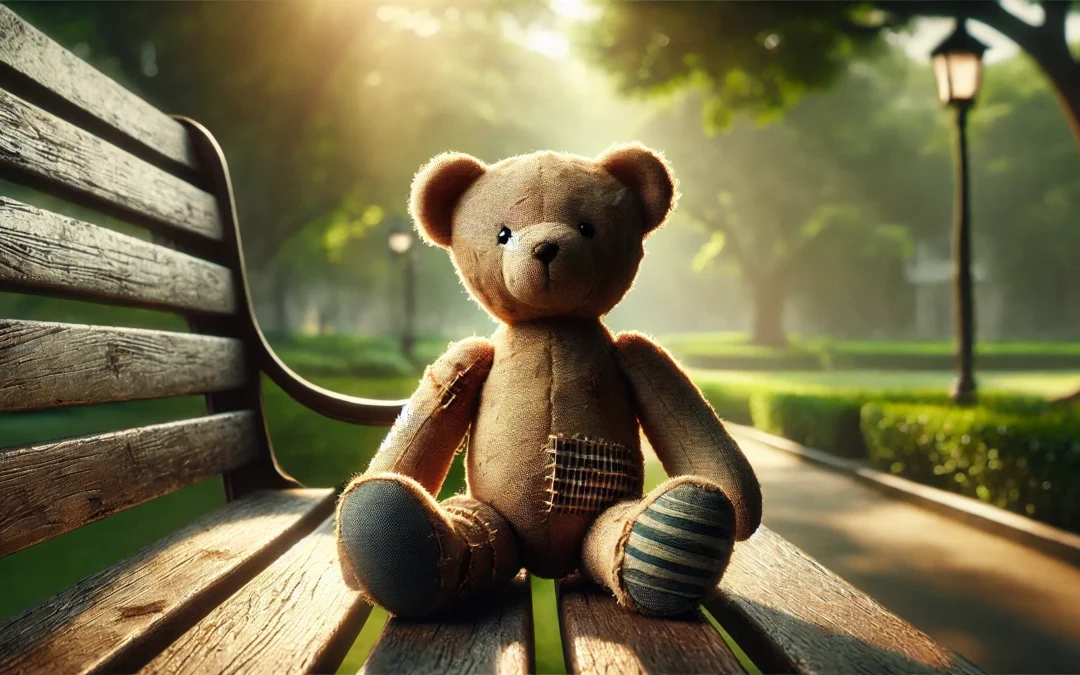Have you ever found yourself holding onto an old ticket stub from a concert you attended years ago, simply because it brings back a flood of memories? This is a perfect example of sentimentality at work. Sentimentality is all about the emotions and memories tied to objects, moments, or experiences that may seem ordinary to others but hold a special place in our hearts. It’s that warm, fuzzy feeling you get when you hear a song from your childhood or smell a familiar scent that takes you back in time.
In this article, we’ll explore 20 examples of sentimentality that many people experience in their everyday lives. These examples will remind you of how small things can carry significant emotional weight. From cherished family heirlooms to handwritten letters from loved ones, sentimentality is a universal experience that connects us all. Whether you’re someone who keeps every birthday card you’ve ever received or just occasionally feels a pang of nostalgia, you’ll find something relatable here. Let’s take a look at how these sentimental items and moments play a role in shaping who we are and how we feel.
Understanding Sentimentality
Sentimentality refers to the excessive expression of feelings of tenderness, sadness, or nostalgia in a way that may be perceived as overly emotional or superficial. It is often characterized by an exaggerated emotional response to situations, objects, or events, where the feelings expressed may seem disproportionate to the actual significance of the subject matter. Sentimentality can manifest in various forms, such as literature, art, film, and everyday interactions, where it aims to evoke an emotional reaction from the audience.
In literature and art, sentimentality is often used to create an emotional connection with the audience, sometimes at the expense of depth or realism. This can lead to criticism, as overly sentimental works may be seen as lacking in substance or authenticity. However, sentimentality can also be appreciated for its ability to touch on universal emotions and experiences, making it a powerful tool for evoking empathy and compassion.
In everyday life, sentimentality can be observed in the way people hold onto mementos, celebrate traditions, or reminisce about the past. While some view sentimentality as a positive trait that highlights human warmth and emotional connection, others may see it as a sign of weakness or an inability to cope with reality.
The Best Examples of Sentimentality
Sentimentality is all around us, often found in the small, meaningful things we hold onto or the moments that linger in our hearts. Below are 20 powerful examples of sentimentality that show how everyday objects, traditions, and experiences can carry deep emotional value.
1. Childhood Memories
Thinking back to childhood, many people feel a deep sense of nostalgia. A simple object like an old toy or a favorite book can bring back vivid memories of carefree days. This emotional connection to the past is a classic example of sentimentality, as it evokes feelings of warmth and longing for a time that felt simpler and more innocent.
2. Family Heirlooms
A family heirloom is more than just an object; it’s a vessel of family history and memories. Whether it’s a grandmother’s wedding ring or an antique clock, these items carry sentimental value. They remind individuals of loved ones and family traditions, creating a bridge between past and present through emotional attachment.
3. Love Letters
Love letters are a timeless example of sentimentality. Each word is carefully chosen to convey deep emotions and affection. When reread years later, these letters can reignite feelings of love and nostalgia, showcasing how sentimentality preserves the emotional essence of past relationships.
4. Old Photographs
Looking through old photographs often stirs sentimental feelings. Each image captures a moment in time, evoking emotions tied to those memories. Whether it’s a family vacation or a candid moment with friends, these snapshots hold emotional significance, reminding people of their personal journeys and connections.
5. Music and Songs
Certain songs have the power to transport listeners back to specific moments in their lives. A tune that played during a first dance or a road trip can evoke strong feelings of nostalgia and sentimentality. Music often serves as a soundtrack to life’s experiences, making it a powerful medium for emotional reflection.
6. Handwritten Notes
In an age of digital communication, a handwritten note can feel exceptionally sentimental. It embodies personal touch and effort, making the recipient feel valued and cherished. Such notes often become keepsakes, treasured for the emotions and memories they encapsulate.
7. Holiday Traditions
Holiday traditions are rich with sentimentality, as they are often passed down through generations. Whether it’s baking cookies together or decorating a Christmas tree, these rituals evoke feelings of warmth and togetherness. They remind individuals of happy times spent with family, creating lasting emotional bonds.
8. Firsts and Milestones
First experiences and milestones, like a first kiss or graduation, are often steeped in sentimentality. These events mark significant points in a person’s life, filled with emotions and personal growth. Reflecting on these moments can bring a sense of pride and nostalgia, highlighting their emotional importance.
9. Farewell Gifts
Farewell gifts are often chosen with sentimentality in mind. A thoughtful gift given at a goodbye party can hold deep emotional significance, symbolizing friendship and shared memories. These items become reminders of connections and experiences, cherished long after goodbyes have been said.
10. Personal Journals
Keeping a personal journal allows individuals to capture their thoughts and feelings over time. Revisiting old entries can evoke strong sentimental emotions, as they offer a glimpse into past experiences and personal growth. These reflections can be both comforting and enlightening, showcasing the emotional journey of life.
11. Childhood Recipes
The aroma of a dish from one’s childhood can instantly bring back memories of family gatherings and shared meals. These recipes often hold sentimental value, as they are passed down through generations, connecting people to their cultural heritage and family history. Preparing and eating these dishes can evoke feelings of comfort and nostalgia, as each bite carries the essence of home and tradition.
12. Personal Playlists
Creating a playlist of songs that mark different phases of life is a deeply personal endeavor. Each track is chosen for its emotional resonance, capturing specific moments in time. When revisited, these playlists can evoke a flood of memories, making them a powerful tool for reflection and emotional connection.
13. Old Letters from Friends
Rediscovering a letter from an old friend can be a sentimental experience. The handwriting, the choice of words, and the shared memories encapsulated in these letters can reignite the warmth of friendship. They serve as tangible reminders of bonds that have shaped one’s life, even if time and distance have altered them.
14. School Yearbooks
Flipping through a school yearbook can evoke a mix of emotions. Each page is a snapshot of a formative period, filled with photographs, signatures, and messages from classmates. These books are more than just collections of faces; they capture the essence of youthful dreams and friendships, often prompting reflections on how far one has come.
15. Passed-Down Recipes
A recipe handed down through generations is a treasure trove of sentimentality. It’s not just about the ingredients; it’s about the stories and memories associated with them. Cooking these dishes can bring a sense of continuity and connection to family traditions, as each meal becomes a tribute to those who came before.
16. Old Ticket Stubs
A collection of ticket stubs from concerts, movies, or travel can serve as a sentimental journey through past experiences. Each stub is a reminder of the excitement and emotions felt at those events. They are small, tangible mementos of adventures and shared moments, often sparking conversations and fond recollections.
17. Baby Clothes
For parents, keeping a few pieces of their child’s baby clothes can be incredibly sentimental. These tiny garments are reminders of a fleeting time when their children were small and dependent. They hold memories of first steps and first words, encapsulating the innocence and wonder of early childhood.
18. Old Home Videos
Watching old home videos can be a deeply emotional experience. These recordings capture candid moments and milestones that might otherwise be forgotten. They allow people to relive past events, hearing the voices and seeing the faces of loved ones, often bringing laughter and tears as they recall those times.
19. Personal Artwork
Artwork created in the past can evoke a strong sense of sentimentality. Each piece is a reflection of the artist’s emotions and experiences at the time it was made. Revisiting old drawings or paintings can bring back memories of the circumstances and feelings that inspired them, offering insights into personal growth and change.
20. Old Text Messages
Scrolling through old text messages can bring back a wave of nostalgia. These digital conversations capture the essence of daily interactions and significant moments shared with others. They remind individuals of past relationships and friendships, often highlighting the evolution of these connections over time.
Sentimentality in Different Cultures
Sentimentality takes on many shapes across the world, reflecting the unique traditions, values, and histories of different cultures. These differences showcase how emotions are deeply tied to cultural identity and how people everywhere cherish the past in meaningful ways.
In Asian cultures, for example, honoring ancestors is a cornerstone of sentimentality. Practices like offering incense, food, or flowers at ancestral altars reflect a profound respect for family history and lineage. These rituals connect people to their roots and reinforce a sense of continuity. Festivals like the Chinese Qingming Festival, also known as Tomb-Sweeping Day, bring families together to remember their ancestors while strengthening bonds among the living.
In contrast, Western cultures often express sentimentality through keepsakes and heirlooms. Items like family photo albums, wedding rings, or handwritten recipes are passed down through generations, preserving not just memories but also the emotions tied to them. Birthdays, anniversaries, and holidays are common occasions to celebrate these traditions, with each event carrying its own nostalgic charm.
Cultural storytelling also plays a powerful role in fostering sentimentality. Folktales, myths, and legends often blend history with imagination, helping people connect to the values and experiences of their ancestors. In countries like Ireland, stories of mythical heroes and hauntingly beautiful landscapes evoke a deep connection to the land and its history. Similarly, Native American storytelling often preserves lessons, memories, and spirituality, offering a bridge between generations.
Festivals and rituals around the world often spark shared feelings of nostalgia. In India, Diwali brings families together to light lamps, recall ancient traditions, and celebrate the victory of good over evil. In Mexico, Día de los Muertos (Day of the Dead) invites people to honor deceased loved ones by decorating altars with photos, favorite foods, and marigolds, blending joy and reverence in a deeply emotional experience.
Yet, cultures differ in how they view sentimentality. In some societies, being sentimental is seen as a sign of strength and connection. For instance, many Mediterranean cultures openly express emotions and celebrate them as part of their communal identity. On the other hand, more stoic cultures might perceive excessive sentimentality as indulgent or impractical. In countries like Japan, emotional restraint is often valued, yet small gestures – like saving a child’s first calligraphy or a loved one’s handwritten letter – reflect quiet, deeply personal sentimentality.
Ultimately, sentimentality is a universal human trait, yet its expression is shaped by the customs and values of each society. By looking at these diverse practices, we see how sentimentality weaves emotions, memories, and traditions into the fabric of daily life, creating a shared sense of meaning and identity that transcends time.
The Role of Memory in Emotional Connections
Memory plays a crucial role in how we form emotional connections with people, places, and even objects. When we recall past experiences, especially those that are significant or impactful, we often do so with a layer of emotion attached. These memories can evoke feelings of happiness, nostalgia, or even sadness, which enrich our personal narratives and shape our identities.
Consider how a specific song can transport you back to a high school dance or a childhood toy can remind you of simpler times. These triggers are powerful because they are tied to our memories, which are themselves deeply connected to our emotions. The brain tends to store emotional events more vividly than neutral ones, making those memories more accessible and influential in our daily lives.
Furthermore, shared memories with loved ones can strengthen relationships. Reminiscing about the past can foster a sense of belonging and understanding, as it allows individuals to relive moments that have contributed to their bond. These shared experiences become a foundation for empathy and compassion, allowing people to connect on a deeper level.
In a broader sense, memory influences how we perceive and respond to current situations. Our past experiences inform our present emotions and decisions, often without us even realizing it. By understanding the role of memory in emotional connections, we can better appreciate the complexity of human interactions and the ways in which our past continues to shape our present.
The Role of Sentimentality in Literature and Art
Sentimentality plays a significant role in literature and art, often serving as a powerful tool to evoke emotions in audiences. In literature, authors use sentimental writing to create emotional connections between characters and readers. This technique involves the use of descriptive language, emotional scenarios, and relatable characters to stir feelings such as nostalgia, love, or sadness. Sentimental literature can range from classic romantic novels to contemporary stories that explore human relationships and emotional struggles.
In art, sentimentality is expressed through visual elements that capture emotions and moods. Artists may use color, composition, and subject matter to convey feelings, often aiming to provoke a specific emotional response from the viewer. For example, a painting depicting a serene landscape at sunset might evoke feelings of peace and nostalgia. Sentimentality in art and literature can be a double-edged sword; while it can deepen the audience’s emotional engagement, it may also be criticized for being overly dramatic or manipulative. Nevertheless, its ability to resonate emotionally makes it a lasting and influential aspect of creative expression.
Sentimentality in Marketing and Advertising
Sentimentality plays a significant role in marketing and advertising. Companies often use sentimental themes to create emotional connections with consumers. These campaigns can tug at heartstrings, making products more memorable. For example, commercials during the holiday season often feature family gatherings and nostalgic moments. This approach can boost brand loyalty and drive sales. People remember how a brand made them feel. That emotional recall can be powerful. It makes them more likely to return to the product or service.
Using sentimentality in marketing isn’t just about making people feel good. It can also involve creating a sense of nostalgia. This can be a longing for simpler times or childhood memories. Advertisers leverage this by incorporating retro styles or themes. This can make older consumers reminisce, while younger ones might find it novel or interesting. However, it’s essential for brands to strike the right balance. Overusing sentimentality can lead to skepticism. People might see it as manipulative. So, authenticity is key. Brands need to ensure their messages resonate genuinely with their audience.
Sentimentality and Its Impact on Personal Relationships
Sentimentality can deeply affect personal relationships. It often manifests in the way we remember shared experiences. A simple song or a particular place can evoke memories. These memories can strengthen bonds between individuals. They remind us of shared moments, both joyful and challenging. Sentimentality helps us appreciate the value of our connections. It encourages us to cherish our relationships and the time we spend together.
However, sentimentality can also have a downside. It might cause someone to hold onto relationships longer than they should. This is especially true if they are clinging to the past. People might idealize a relationship based on memories, overlooking present issues. It’s crucial to distinguish between genuine affection and holding onto something just for the sake of nostalgia. Being sentimental is not inherently bad. It can enrich our lives and relationships. But it’s important to balance it with realism. Relationships need to evolve and adapt. Otherwise, they might become stagnant or even harmful.
Read also: 30 Rebellion Examples & Definition
The Most Popular on BitGlint

40 Social Dilemma Examples in the World & Real Life
Social dilemmas are everywhere. They shape the choices we make at work, in our communities, and even on a global...

30 Favor Examples & Definition
Doing a favor means helping someone without expecting anything in return. It’s an act of kindness that can strengthen...

30 Naivety Examples & Definition
Naivety is something most people experience at some point in their lives. It often starts in childhood, but for some,...

20 Chronology Examples & Meaning
Chronology is something we use more than we realize. It shows up in conversations, in how we remember the past, and in...

30 Wishful Thinking Examples & Meaning
Wishful thinking is something we all do at some point. You hope things will turn out fine—even if there’s no real...

20 Examples of Gravity & What Gravity Really Is
Gravity is one of the most important forces in the universe, but many people don’t fully understand what it really is...

20 Examples of Secondary Consumers in the Food Chain
Secondary consumers are animals that eat other animals—usually herbivores that feed on plants. They’re an important...
Get Inspired with BitGlint
The Latest
30 Flow State Examples & Definition
Most people have felt it at some point — that rare moment when everything just clicks. You're working, moving, or thinking, and suddenly it's like the rest of the world fades out. You're focused, clear, and everything you're doing feels smooth and natural. That’s...

30 Cynicism Examples in Everyday Life & Definition
Cynicism is something most people have seen, heard, or even felt - but few stop to really think about what it means. It shows up in jokes, in conversations, and in quiet thoughts we don’t always say out loud. Some people wear it like armor. Others see it as honesty....
50 Examples of Square Things
Square things are part of everyday life, even if we don’t always think about them. From objects we use at home to tools, packaging, and design elements we see out in the world, the square shape is everywhere. It’s simple, balanced, and practical — which is exactly why...
40 Societal Expectations That Shape Our Lives
Imagine walking into a room full of people and feeling an unspoken pressure to act a certain way. This happens to all of us, often without even noticing. Societal expectations influence our lives from the very beginning. They affect the clothes we wear, the careers we...

